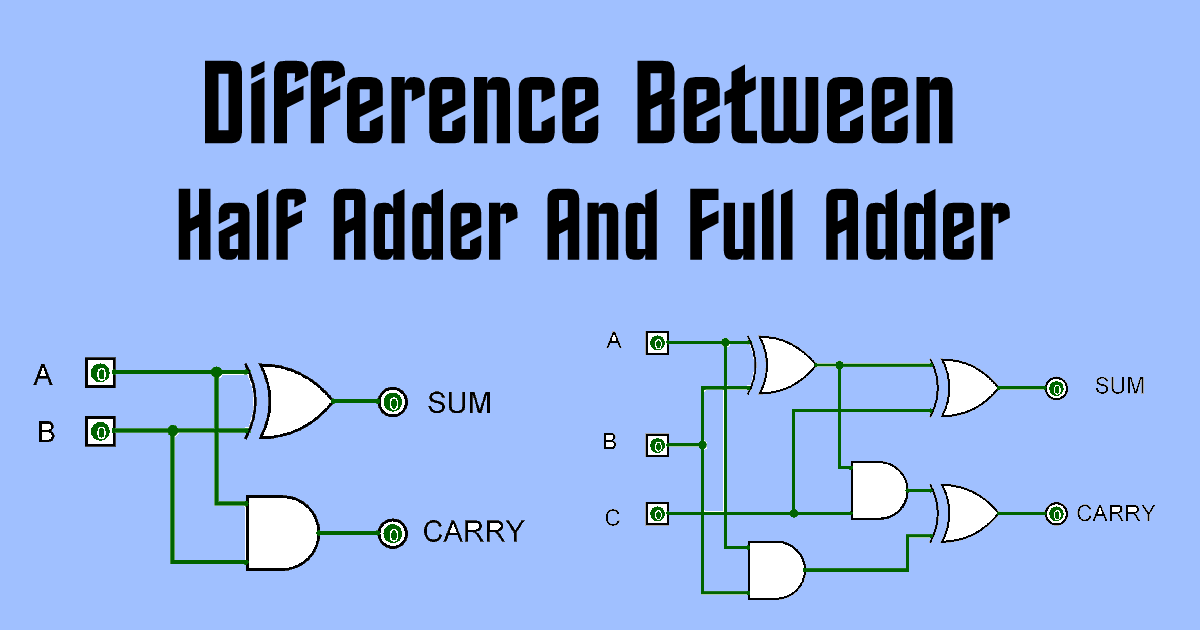Difference Between Half Adder And Full Adder

Both half adders and full adders are combinational digital circuits used in the design of binary addition.
Here are the key differences between a half adder and a full adder:
Half Adder:
-
Inputs:
- Two Inputs (A and B): A half adder takes two binary inputs, typically labeled A and B.
-
Outputs:
- Sum (S) and Carry (C): It produces two outputs: the sum (S) of the inputs and a carry (C) output.
-
Functionality:
- Basic Addition: A half adder performs basic addition of two bits, providing the sum and a carry out.
-
Carry Out:
- No Carry In Consideration: It does not consider any carry input from previous stages.
-
Equations:
- Sum (S): S = A XOR B (XOR operation)
- Carry (C): C = A AND B (AND operation)
Full Adder:
-
Inputs:
- Three Inputs (A, B, and Cin): A full adder takes three binary inputs: A, B, and a carry input (Cin) from the previous stage.
-
Outputs:
- Sum (S) and Carry (C): It produces two outputs: the sum (S) of the inputs and a carry (C) output.
-
Functionality:
- Complete Addition: A full adder performs complete binary addition, considering both the current inputs and any carry input from previous stages.
-
Carry In:
- Consideration of Carry In: It takes into account the carry input (Cin) from the previous stage.
-
Equations:
- Sum (S): S = A XOR B XOR Cin (XOR operation)
- Carry (C): C = (A AND B) OR ((A XOR B) AND Cin) (AND and OR operations)
Cascading:
-
Half Adder Cascading:
- Limited for Multibit Addition: When cascading half adders for multibit addition, an external circuit is needed to handle the carry between stages.
-
Full Adder Cascading:
- Straightforward Cascading: Full adders can be cascaded easily to perform multibit addition without the need for external circuitry to handle carries. Each full adder can take the sum and carry output from the previous stage.
Use Cases:
-
Half Adder Use Case:
- Limited to Single Bit Addition: Suitable for single-bit addition where there is no carry input from previous stages.
-
Full Adder Use Case:
- Multibit Addition: Designed for multibit addition where carries from previous stages need to be considered.
In summary, a half adder is a basic circuit for adding two bits without considering any carry from previous stages, while a full adder is a more complete circuit that considers both the current inputs and any carry input from earlier stages, making it suitable for multibit addition.
Thank you.
